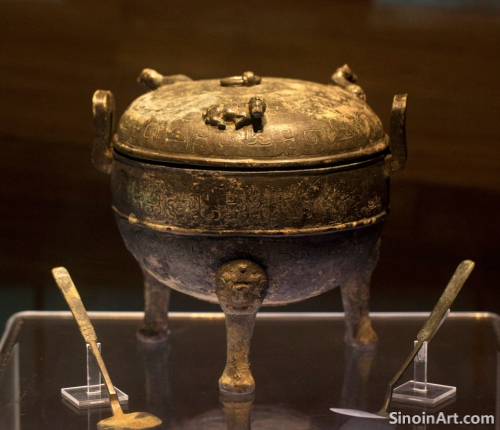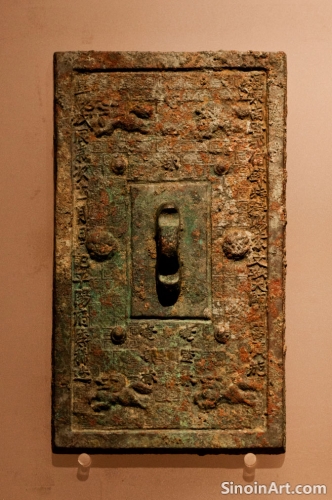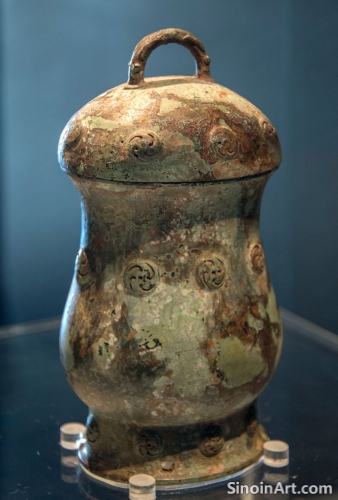Bronze Ware and Ancient Chinese Concepts of the Soul: Its Journey, Protection, and Continuity
|
The presence of bronze objects in ancient Chinese tombs reveals a great deal about the beliefs and traditions associated with the afterlife, with bronze objects used to assist the soul in its journey, provide it with spiritual protection, and ensure its continued existence in the realm beyond. The presence of these objects in the tomb is a testament to their spiritual and symbolic significance. The interplay between the material and spiritual realms is a key element of ancient Chinese beliefs about life and death.  Bronze mirrors, often placed in tombs, were believed to help guide the soul of the deceased, providing a reflection of their earthly life and helping them to transition to the next world. The reflective properties of the mirror were seen as an important component of its protective powers. The mirrors helped to provide both guidance and security for the journey of the soul.  Bronze weapons, which were also often included in tombs, were seen as providing the deceased with protection from negative forces, helping them to defend themselves in the afterlife. The use of these weapons helped to provide both actual and also spiritual protection for the soul.  Bronze vessels, which were intended to hold offerings and provisions for the departed, helped to support and sustain the soul in its journey into the world beyond. These vessels were carefully selected based on their functional purposes, as well as their symbolic associations. The care with which the soul was prepared for the next world is a key element of ancient Chinese funerary practices. |
Tag : bronze soul, Chinese afterlife, spirit journey, tomb protection, funerary beliefs
Related information
- Bronze Ware and Ancient Chinese Understandings of the Natural World: Animal Symbolism and Ecological Awareness
- The Enduring Appeal of Chinese Bronze Ware: Timeless Art and Cultural Legacy
- Bronze Ware and the Ancient Chinese Elite: Luxury, Status, and Power
- Bronze Ware and Ancient Chinese Beliefs About Immortality: The Quest for Everlasting Life
- Bronze Ware and Trade Networks in Ancient China: Exchange and Interaction
This article explores how bronze ware reflects ancient Chinese understandings of the natural world, highlighting the detailed representations of animals, plants, and landscapes, and demonstrating the ancient awareness of the interconnectedness of humans and their environment.
This article emphasizes the enduring appeal of Chinese bronze ware, highlighting its timeless beauty, its blend of function and symbolism, its ability to connect us with the ancient world, and the importance of continued study and preservation for future generations.
This article explores the association of bronze ware with the ancient Chinese elite, highlighting its use as a symbol of wealth, status, power, and its role in reinforcing social hierarchies and displaying authority.
This article explores the connection between bronze ware and ancient Chinese beliefs about immortality, highlighting how mirrors, vessels, and symbolic designs were used to ensure the well-being of the deceased, and to help with their passage to an eternal existence.
This article explores the role of bronze ware in ancient Chinese trade networks, highlighting its importance as a trade commodity, its contribution to the exchange of cultural ideas, and its role in connecting different regions of China.